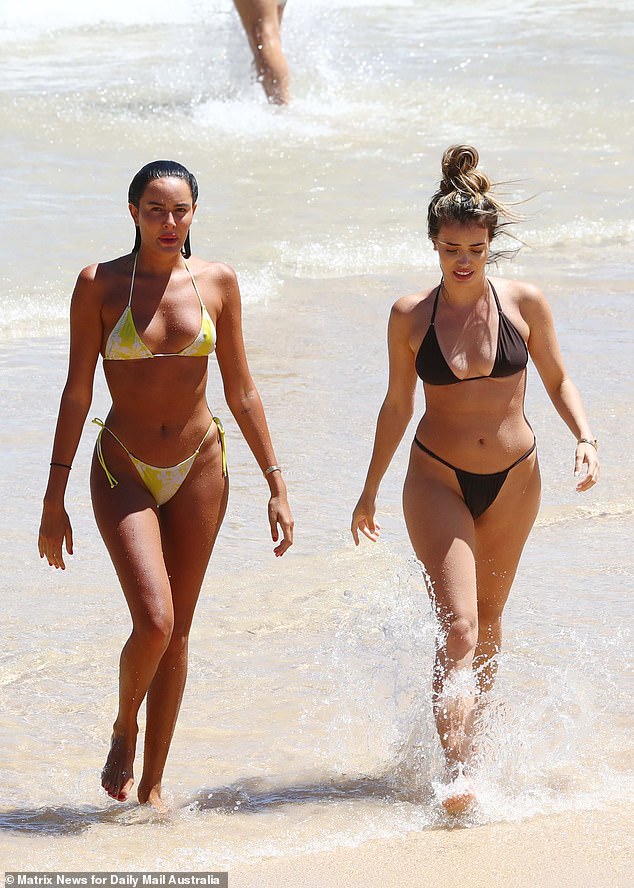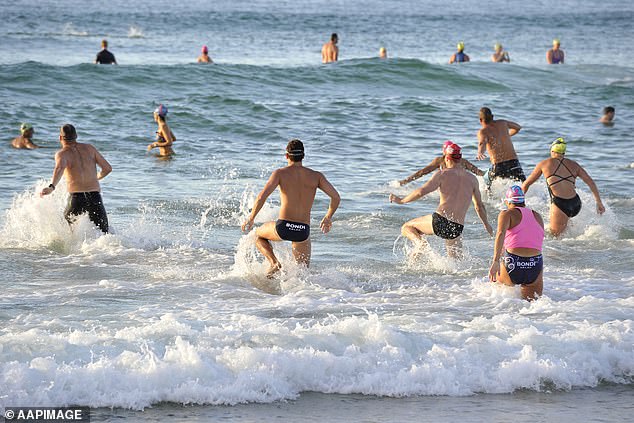Huge change coming for swimmers at some of Australia’s best beaches
Swimmers can now ‘check before they swim’ at NSW beaches and inland swimming spots, while the state’s new real-time water quality monitoring system is now operational.
From Saturday it will be from the government Lifeguard The website provides live updates on water quality, rating beaches, rivers and inland swimming spots at five quality levels: very good, good, fair, poor and very poor.
Very good means the site has generally excellent microbial water quality and very few potential sources of faecal pollution, according to the NSW State of the Beaches 2023-24 report.
Good means that the site generally has good microbial water quality and the water is usually considered suitable for swimming.
Fair means that the microbial water quality is generally suitable for swimming, but due to the presence of significant sources of fecal contamination, extra caution should be taken to avoid swimming during and up to three days after rainfall or if there are signs of contamination , such as discolored water or odor or dirt in the water.
Poor means that the location is prone to fecal pollution and that the microbial water quality is not always suitable for swimming.
Very poor means that the location is very sensitive to fecal pollution and is most likely not suitable for swimming.
Some of Sydney’s best beaches received a poor rating in the report.
Swimmers can now ‘check before they swim’ at NSW beaches and inland swimming spots, while the state’s new real-time water quality monitoring system is now operational (pictured is Belongil Beach in Byron Bay)
Bondi Beach is rated good, while Coogee and Bronte Beach were both rated poor.
Maroubra Beach, south of the city, received a good rating, while the Oatley Bay Baths received a poor rating.
Swimming in polluted water poses serious health risks, the report also warns.
“Contamination of recreational waters with fecal material from animal and human sources can pose significant health problems to beach users due to the presence of pathogens (disease-causing microorganisms) in the fecal material,” the report said.
‘The most common groups of pathogens that occur in recreational waters are bacteria, protozoa and viruses.
‘Exposure to contaminated water can cause gastroenteritis, with symptoms including vomiting, diarrhea, stomach pain, nausea, headache and fever.

From Saturday, the government’s Beachwatch website will provide live updates on water quality (pictured are swimmers at Bondi Beach)
‘Eye, ear, skin and upper respiratory infections can also be contracted when pathogens come into contact with small breaks and tears in the skin or ruptures of the delicate membranes in the ear or nose.’
Locations monitored include coastal beaches from Eurobodalla south to Sydney and Port Stephens and then to Ballina near the NSW-Queensland border.
Parts of western Sydney are now also under surveillance.
“I am pleased that a range of popular inland swimming spots, including the hugely popular Penrith Beach, will be added to Beachwatch’s live water quality site this summer,” NSW Environment Minister Penny Sharpe said.
‘This site also gives swimmers information about swell and tides.
‘Our beaches almost always have good to very good water quality, but after rain it is important to check this before swimming.
‘The Bureau of Meteorology is predicting a wet summer, so check the Beachwatch website as the weather warms up.’
The report shows that 72 per cent of all monitored swimming locations in NSW achieved a very good or good rating for 2023-2024, including 95 per cent of ocean beaches.
In 2021-2022, 80 percent of all audited locations were rated as very good or good.
In general, swimming should be avoided during and until one day after heavy rainfall on ocean beaches and for up to three days at estuarine locations.

Locations monitored include coastal beaches from Eurobodalla south to Sydney and Port Stephens and then to Ballina near the NSW/Queensland border (pictured are swimmers at Bondi Beach)
